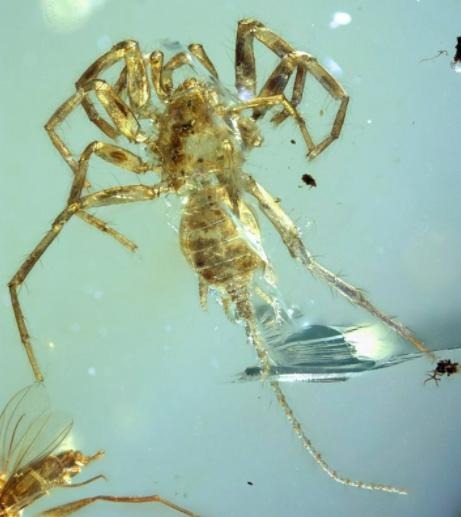Ancient Spiders Found In Amber Had Long, Hairy Tails
Researchers have discovered ancient spiders preserved in amber, and they, like many ancient critters, are more horrifying than their modern counterparts. While resembling the spiders you may find in your cupboard today, the ancient variety have one very distinct, very uncomfortable difference: a long semi-hairy tail. Researchers suggest the tail may have been used to feel around for sensing nearby things.
Amber has been a fruitful source of all sorts of ancient bugs and small animals. These entombed creatures are often perfectly preserved, having fallen into or become trapped in sap during ancient times. The discovery of amber containing a type of arachnid called Chimerarachne yingi is no exception.

This is a new species of arachnid, according to researchers who explain that the amber was sourced from Myanmar and dates about around 100 million years ago in the mid-Cretaceous age. A total of four specimens were discovered in amber that was provided to the Nanjing Institute of Geology and Paleontology.
At first glance the arachnid resembles a spider you may find at home, including four walking legs, male pedipalps, plus fangs and spinnerets that produce silk. These were tiny spiders based on the four specimens, which are said to have a body measuring around 2.5mm in length. Atypical, though, are the spiders' long, slim tails, which measure about 3mm long and feature short hairs.
An older similar arachnid resembling modern spiders with tails were previously known to researchers, but they lacked the ability to produce silk. These new specimens are younger and retain the tail, but also introduce the ability to make silk. This makes these spiders something of a hybrid between the two — older and modern — and helps potentially shed light on the evolution of modern spiders.
SOURCE: The University of Kansas
